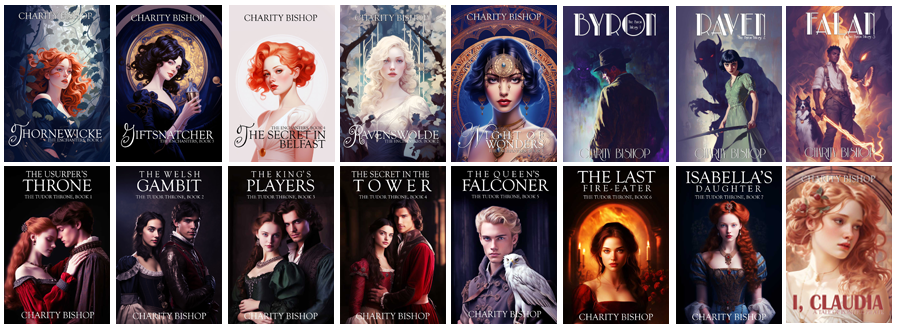Carter Street Hangman (1998)
Our rating: 4 out of 5
Rated: TVPG
reviewed by
Charity Bishop
Based on the first novel in a highly successful twenty-year book series by crime novelist Anne Perry, The Carter Street Hangman is an intelligent exploration of Victorian society dabbling in the dark side. While intriguing in its sinister element, it is the characters that remain the most memorable, much more so than the crime.
Murder has stricken the residents of the wealthy Carter Street. Not one but two young women have been discovered strangled and that the second is the only daughter of a wealthy local lord means Scotland Yard must clear up the case as soon as possible. Inspector Thomas Pitt (Eoin McCarthy) has his work cut out for him, for while the assortment of characters that frequent and live in the houses along the street are fascinated with the morbid details of the crime, none of them are all that interested in assisting him in his investigation. The most recent victim ran in the same social circles as Charlotte Ellison (Keeley Hawes), who takes an interest in the crime. She is not that fond of Inspector Pitt, but seems to continue running into him at every turn, especially when she must turn to him after one of her maids is attacked on broad daylight. This draws his attention to her household and the potentially sinister motives of her brother-in-law, as well as her father. Most of the men seem to be hiding something... and suspicion only increases when their housemaid turns up dead.
Charlotte is determined to get to the bottom of it, even if it means unearthly undesirable family secrets. There are no end of potential murderers involved in her life, from the curiously aloof local physician to the seemingly mild-mannered vicar. But it seems that the man dubbed by the newspapers as the "Carter Street Hangman" is not finished yet, and just might have an interest in silencing her forever. Though a good costume drama in terms of pacing and costume design, the film is often difficult to follow and I had a lot of trouble keeping characters straight -- there are so many of them and several of the men resemble one another, so it wasn't until halfway through that I figured out who some of them were. We are never properly introduced to her brother-in-law, nor does the film mention her sisters as such -- we come to those conclusions naturally in later scenes. Unfortunately, while there are one or two minor clues as to the identity of the murderer, we are not given enough to figure it out on her own, nor do we understand the motive behind it (this is primarily through an enormous mistake in film making -- the music during the explanation was so loud, I only caught a handful of words).
However, those faults aside it's a reasonable adaptation (Puritans might complain at some changes and omissions) and has some terrific acting. There are numerous red herrings to explore but the interesting thing about it is the characters, Charlotte in particular. She has more personality than anyone else in the production, thanks in part due to Keeley Hawes' dedication to making Charlotte intelligent but also just a little bit of a snob. Her interactions with the inspector are fun to watch, as they begin with open hostility and then transition into something akin to affection and a hint of budding romance. There are also a couple of touching subplots that explore Victorian culture without shying away from its darker side. Our hearts are even tugged once or twice. The film doesn't contain much offensive material -- we see flashes of women struggling with an assailant and their dead bodies afterward with blood clotting on their throats. It spatters on fabric and is shown briefly in the street. Violence consists of a man shaking his wife and several implied and/or attempted physical assaults. Language is restrained to one use of the term "bloody." We learn of two separate adulterous affairs -- a man admits to having a mistress, and we see another man leaving the room of a maid (and placing a coin on her bedside table in "payment"). Mentions of illegitimate children come up, as well as a reference to a doctor who might be an abortionist. The girls giggle over the thought of "performing wifely duties" with a man they find unattractive.
Religion is explored in the sense that Charlotte is repulsed by the local minister, who preaches a sermon to the extent of the women being responsible for their own deaths through their sins. She has an angry confrontation with him later and claims that she wants nothing to do with "his" God. It's intimidated that the murderer has religious motivations (they mention Satan and purging the earth of "bad" women while trying to strangle someone). A man claims to be an atheist who makes charitable visits to get on the good side of Christians, who would avoid him otherwise. He has a statue of a Hindi goddess in his entrance hall and says if he were to choose a religion, it would be that one.
Toward the end I thought the film might trend in a more offensive direction, but it doesn't -- I did discern who was the murderer before the rest of the characters figured it out, but at the same time I wasn't entirely certain of my conclusion -- which means the author has accomplished something remarkable by leaving a shred of doubt in my mind going into the climax. Even though it was at times confusing, I think knowing the characters better and also understanding the motivations behind the crime might make it more clear on a second viewing. I was sorry to discover they never filmed further adaptations of the Inspector Pitt novels. It would have been fun to curl up with them one after another on a rainy afternoon.
